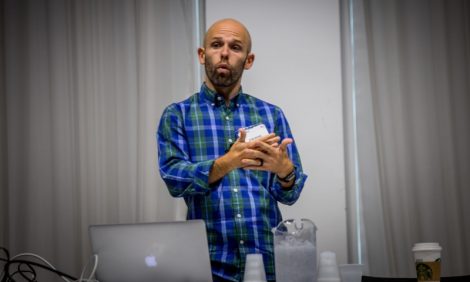
Zen and the art of app integration: Building your stack

Can you attribute your accounting “aha moment” to a goat cheese salad? His epiphany might be unique, but for Xero’s US Midwest Ambassador, Ryan Watson, his journey to the cloud might sound more familiar than you may think.
At a session at this year’s Accountex in Boston, Ryan shared the story of his accounting firm’s transition to the cloud and how, today, he uses the power of the accounting ecosystem to help his clients achieve inner (financial) peace.
Automating processes to build efficiency
Many years ago, Ryan’s firm was sifting through a client’s mountainous pile of financial statements to find out why the restaurant business’ salads were so “abysmally unprofitable.” After spending an inordinate amount of time determining it was the salads with goat cheese that were pulling down the aggregate margins of the business, Ryan and his firm decided there had to be a better way.
The amount of time they were putting into the work was disproportionate to what they were getting out. They knew there was no way they were going to make money if they continued doing the work manually, and set out to find a more automated way. Not long after they adopted Xero and implemented an extended ecosystem of apps to “provide scalability and efficiency in their firm.”
Ryan said that his back office story probably sounds pretty familiar to most attendees. Today, Ryan’s firm specializes in setting up technologically sophisticated cloud accounting ecosystems for his clients, building automated, repeatable processes for their clients.
Starting day one of a client relationship, Ryan’s team begins understanding the client’s back office process. In the next stage, Ryan’s team moves on to implementing Xero as the general ledger, followed by the suite of apps that will make his clients’ lives easier. Here are some of the apps and functions in his self-described “arsenal”:
Bank feeds
Ryan used the example of a marketing startup client of his, who had their account reconciliation set up in the most manual way in the beginning. They received bank statements by mail, entered and reconciled everything manually on paper and filed it away every month. Using Xero, which has partnerships with more than 110 banks globally, the client can connect their bank account to their accounting platform. In doing so, their bank activity flows on-demand or automatically into Xero – making reconciliation a breeze.
Document collection and capture
Receipts are one of those things that every business has a “system” for collecting before it eventually make its way to an expense report. Whether it be shoe boxes or, in the case of one of Ryan’s clients, a basket at the front of the office – there’s a better way. Ryan highlighted Expensify as one of a number of apps small businesses can use to snap a photo of their receipts and the app will fill out and submit an expense report for them automatically.
Bills, too, can be another source of data entry dread. Ryan says Hubdoc enables employees to forward bills to an accounts payable email alias, where Hubdoc then extracts the key data. You can even use Hubdoc to forward a bill on to a bill payment platform like Bill.com. Using the platform, you can easily manage workflow, approvals and pay bills.
The particular set of apps Ryan highlighted in his session is just one example of an almost infinite number of combinations. Xero’s app marketplace alone has more than 500 options to choose from. As Ryan put it, “part of the power of the accounting ecosystem is empowering employees to feed in the data – without all of these pieces there’s no way for us to provide the services.”
The post Zen and the art of app integration: Building your stack appeared first on Xero Blog.
Source: Xero Blog






